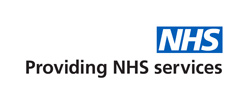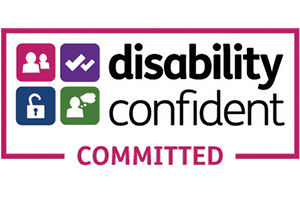Back pain
The majority of back pain will settle after a week or so. Rest as needed and take a suitable pain killer. After this it is important to get moving again with gentle stretching and walking. If the pain is getting worse, or is spreading down the legs, or there or tingling or numbness in the legs consult your GP. To help prevent further attacks keep fit, try to keep your weight down and always lift properly with a straight back.
Burns and scalds
Treat by quickly cooling the area under a running cold tap for ten minutes. Cover with a loose dry dressing. DO NOT burst any blisters. If the area is large or a small child is affected take them to Accident and Emergency.
Colds and coughs
We still do not have any effective treatment for the common cold! The usual symptoms are sneezing, running nose, headache, aches and pains, sore throat and dry tickly cough. It is caused by a virus and antibiotics are ineffective. Drink plenty of fluids and ask your Pharmacist for advice about the best medicines. Paracetamol and Aspirin (Aspirin is not safe under 12 years old) will help with the fever, a decongestant may ease the blocked nose.
Coughs may be eased by linctus and a steam/menthol inhalation may also help. If you are coughing up any blood, thick green phlegm or are feeling breathless you should consult your GP.
Diarrhoea and sickness
Most episodes in adults and older children settle quickly by simply stopping solid food for a day and giving frequent small amounts of clear fluids. Diarrhoea medicines are really only worthwhile if you have to travel somewhere or symptoms are persisting (not recommended at all under 12 years).
For babies we recommend stopping all milky drinks (unless breast fed) and giving cooled boiled water with a mixture such as dioralyte if symptoms are severe. Remember – breast fed infants have fewer tummy upsets. Many infants naturally have more than one loose motion a day and bring up some milk after feeds (possetting). If symptoms do not settle in 24 hours then contact your GP or Health Visitor.
Feverish children
Children may have up to ten simple viral infections each year, with perhaps a sore throat or snuffly nose. Always keep paracetamol mixture e.g. ‘Calpol’ in the medicine cupboard. A high temperature in a child who is otherwise well is harmless. Remove excess clothing; keep bed-clothes light and the room cool. Give cool drinks and paracetamol (check dose). If your child is very hot try tepid sponging or a cool bath (not so cold, so as to cause shivering). If the child seems particularly ill or does not settle after two days then contact the surgery. It is perfectly safe to take a feverish child outdoors and therefore a child with a high temperature can be brought to the surgery.
Head injuries
Children often bang their heads. If they have been seen to fall, have not been knocked out and seem lively straight after, they just need to be kept an eye on. The worrying signs are sleepiness, repeated vomiting or continued crying with headache. If you are worried take them to Accident and Emergency. It is safe to give paracetamol.
Head lice
These are not caused by bad hygiene. Contact your Pharmacist or Health Visitor for advice about treatment.
Insect bites and stings
Put ice on the area to keep the swelling down. Antihistamine tablets and Hydrocortisone cream may help with the itching. These can be brought from the chemist without prescription.
Nose bleeds
Sit forward and firmly squeeze the soft part of the nose for 10 minutes. If the nose bleed starts again repeat this action. If bleeding persists, then go to Accident and Emergency. Avoid hot drinks for 12 hours and try not to blow your nose for a few hours.
Rashes in children
Red patches on the skin or small red pimples that don’t itch are extremely common, especially in children with colds. These are usually caused by a virus and no treatment is necessary. Rashes that look like bleeding or bruising in the skin should be checked by a GP urgently or the child should be taken straight to A&E. The spots of Chickenpox start on the trunk, form clear blisters then crust over and become itchy. You do not need to see a Doctor unless the child is very unwell. Treatment consists of paracetamol for fever and calamine cream (or lotion) for the itching. Children are infectious from about two days before the rash appears until all the spots have crusted over. Keep your child away from pregnant women and other adults who have not had the illness. There is no reason why a child with a rash should not be brought to the surgery as if necessary they can wait in a separate room.
Sore throats
The vast majority of sore throats are viral and are NOT helped by antibiotics. Aspirin gargles can ease the pain (not under 12 years) and throat lozenges are effective. If the symptoms go on for more than five days or are particularly severe then contact your GP.
Sunburn
Prevention is best! Treat as for other burns with cold water to remove the heat. Calamine and paracetamol will help. Children are particularly susceptible to sunburn and great care should be taken to avoid over-exposure. It is a good idea to use a water-resistant HIGH factor sun screen. Remember that long term repeated sun exposure significantly increases the risk of certain skin cancers.
Lifestyle information
Healthy eating
A healthy diet does not need to be a boring one. Health experts tell us we are all eating too much fat, salt, sugar etc, but what exactly does this mean? Why not speak to one of our Health Trainers located in the patient Information area about a healthy lifestyle and diet.
Smoking
We are keen to give all our patients who smoke as much help as possible to stop. Please ask at Reception or at any consultation for information and support.
Walking
Even the smallest effort can improve your quality of life and make you feel healthier and livelier. Walking is very good exercise which most people are able to do, and it does not need special equipment. So why not get started on your fitness campaign? Simply start by walking for 15 or 20 minutes at a brisk enough pace to get your heart beating faster, 3 times a week regularly. When you can easily walk for an hour you are ready to move on to swimming, cycling or running.
More useful links on self treatment below:


